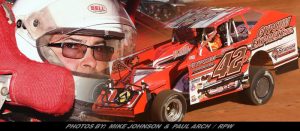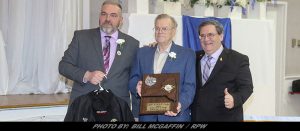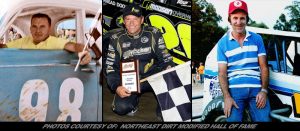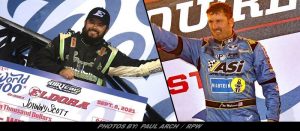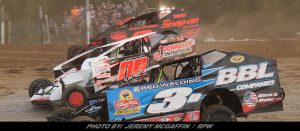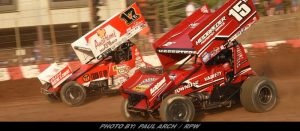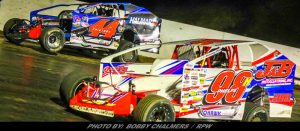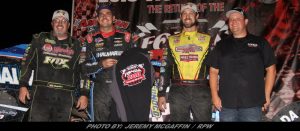Northeast Dirt Modified Hall Of Fame Set To Honor Legendary Car Builder Howard Conkey
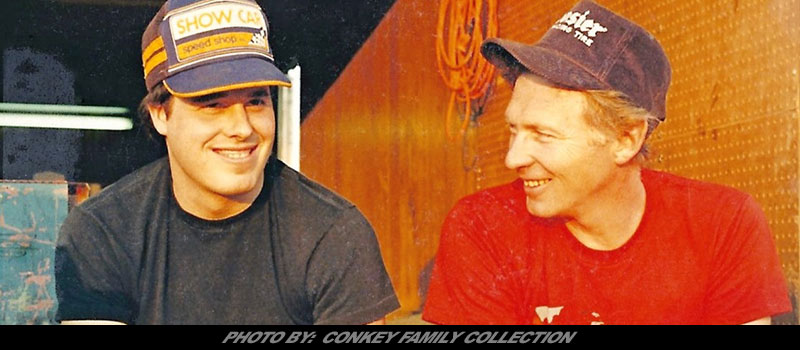
Story By: BUFFY SWANSON / NORTHEAST DIRT MODIFIED HALL OF FAME – WEEDSPORT, NY – For his contributions as a car builder in the 1970s and ’80s, the late Howard Conkey will be honored with the distinguished Mechanic/Engineering Award during the 2019 Hall of Fame ceremonies, to be held on Thursday, July 25, at the Northeast Dirt Modified Museum and Hall of Fame on the grounds of Weedsport Speedway in New York.
A fearless innovator, Conkey was into anything on four wheels. Exotic street cars, roadsters, dirt Modifieds, Supermods, paved track pieces — if he could find a way to make anything faster, Howard was hooked. Even before his Show Car Engineering shingle went up in 1969, Conkey was cooking up speed secrets and starting to turn the sport on its ear.
“When I was a kid — maybe eight or nine years old — Howard had a little workshop within walking distance of my house in Waterloo (NY). He let me hang around there, even though I was probably more of a pest than anything,” Hall of Fame driver Mike McLaughlin remembered. “I worked for him all through high school. He taught me how to weld, how to fabricate. Howard was a very innovative guy. He wasn’t afraid to go outside the box.”
As far back as the mid ’60s, Conkey began playing with chassis offsets, the idea first applied on a hot rod driven by Hall of Famer John McArdell that won track championships at Waterloo and Weedsport. Howard’s experiments in suspension theory gained more ground in 1971, when he built a radically offset dirt Mod for Chuck Ciprich — a ’37 Chevy coupe christened “Old Yeller” — that won 10 in a row.
“It was the first really offset car, especially on dirt,” Ciprich recollected. “It had an L88 big-block Chevy that was set on the left and I sat on the right. It was pretty fast,” Chuck modestly acknowledged.
Never satisfied with the status quo, Conkey continued to tinker with offsets, engine setbacks, suspension points, wheel widths and chassis geometry. Along with Pennsy’s Tobias Speed Shop, Show Car began turning out tube frame cars, essentially moving dirt Mod fabrication out of the scrapyards and into the space age.
The Show Car brand had moderate success in Modified racing. And then, along came Alan Johnson.
Johnson had Chuck Ciprich in mind when he reengineered an old Show Car chassis for the 1980 season, offsetting the car at least six inches and trying some unorthodox tricks with spring weights.
The resulting piece was a rocket ship, winning 20 times that year. The following winter, Maynard Troyer used that car, with Johnson’s basic ideas, as a template for his Mud Buss, sparking a revolution.
But Alan Johnson and Howard Conkey were kindred spirits, both conjuring specters of quark-level speed, neither content with the conventional. So after two years in the groundbreaking Troyer — and 60 feature victories — Alan traded it in for an untried Show Car design in 1983 and proceeded to kill the competition: 28 feature wins, the Mr. DIRT and Super Series crowns, the Florida swing, three track titles, and his first Schaefer 200 at Syracuse.
“It’s the best car I ever had,” Alan recently affirmed. “I believe it was the first dirt Mod that ever made $250,000 in a year.”
Johnson’s outsize success should have paid off for Show Car with piles of sales receipts. But that’s not exactly how it worked out.
“You could buy the baseline chassis, but you couldn’t buy Alan’s chassis,” Conkey’s stepson and fabricator Tony Burgos explained. “The deal was that we couldn’t sell you what Alan had.”
But it really didn’t matter, because building the exact same car, over and over, was not what Howard Conkey was about.
“He just couldn’t do ‘cookie-cutter,’” Burgos conceded. “It wasn’t in his DNA.”
That was apparent in 1984, the year after Alan’s Show Car blew up Syracuse. Conkey came back, not with the proven winner, but with an out-of-the-box brainstorm, completely closed up and streamlined, with the engine placed farther forward and to the left. Sure, it set fast time for the week after the tin was reconfigured, shattering Gary Balough’s 1980 track record. But the big problem was: Alan couldn’t drive it.
“The principle we tried was called turbo thrust,” said Conkey afterward. “We’d always been fast in the corners but seemed to be bogging down the straights, so we figured we’d relieve the car of all those nasty pressures. Went with a real low hood, a real open car.
“The problem was, I forgot about Alan,” Conkey admitted. “If we could’ve driven the car by radio control, I think it would’ve worked. But the air was pulling Alan around so much down the straights, he couldn’t drive it.”
Conkey, the anointed “mad scientist” of Modified racing, continued to walk the cutting edge throughout the ’80s, cross-engineering data from Mods and Supers, constantly coming up with one novel concept after another. He was the first local builder to install a CNC machine, producing parts for Show Car and others. While Pat Ward and Tony Burgos were the ones in the shop, turning out complete cars and chassis, Howard was at his drawing board, dreaming up a new way to go fast.
“He had a mind that never quit,” Burgos said.
A brief alignment with Dave Lape, constructing Champ Cars, lasted a single year: Conkey’s business model did not embrace mass production. It just didn’t hold his interest.
In 1989, a fire decimated the speed shop. No one was hurt, but Show Car lost two of its buildings and a third suffered considerable damage. During the extensive rebuilding process, Howard was diagnosed with cancer. He died in 1993, at age 54.
Alan Johnson recalled Conkey’s contributions to the sport.
“In the heyday of the Oswego Classic, probably in the early ’70s, I think all but one of the cars in the field that year were his,” Johnson marveled. “Those were the big offset cars. Howard then incorporated those ideas into the dirt stuff.”
According to Alan, it was a great time to be in racing, when the rules were still wide open and creativity was not only condoned but encouraged. A risk-taker like Howard Conkey was right in his element.
“He wasn’t one to sit on anything. He was always trying to improve,” Johnson stated. “He was open to trying it all.”


